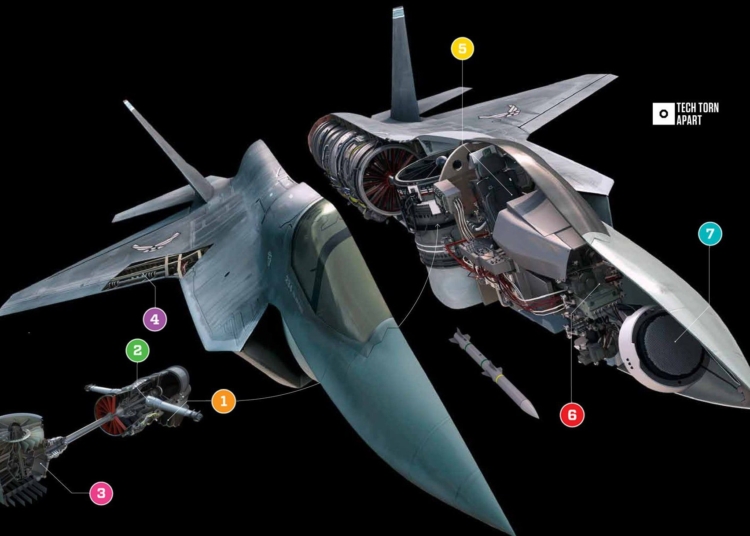This content introduces the topic of next-generation stealth technology, highlighting its significance in aviation and military operations. The content discusses the evolution of stealth technology, beginning with the unveiling of the F-117 Nighthawk and its design features. It then explores three breakthroughs in stealth technology: advanced radar-absorbing materials, angled surfaces and faceting, and triangular and flying wing designs. The content also reveals the latest breakthroughs in stealth technology, including active stealth, nanomaterials and metamaterials, and directed energy weapons. The future of stealth technology is briefly mentioned, with the potential for cloaking devices. Overall, the content emphasizes the continuous advancements in stealth technology and their impact on detection and surveillance capabilities.
Next-Gen Stealth Technology: Unmasking the Latest Breakthroughs
Introduction to Stealth Technology
Stealth technology, also known as low observable technology, has revolutionized aviation and military operations. The primary objective of stealth technology is to make an aircraft or military equipment nearly invisible to radar, infrared, and other detection systems. Over the years, numerous breakthroughs have been made in this field, allowing for the development of next-generation stealth technology that pushes the boundaries even further.
The Evolution of Stealth Technology
Stealth technology first gained public attention with the unveiling of the F-117 Nighthawk, a stealth bomber, during the Gulf War. However, the concept had been in development for decades before that. The revolutionary design of the F-117, featuring faceted surfaces and radar-absorbing materials, set the stage for future breakthroughs.
1. Advanced Radar-Absorbing Materials
One significant breakthrough in stealth technology is the development of advanced radar-absorbing materials (RAM). These materials are designed to absorb radar waves rather than reflecting them back to the source. This significantly reduces the radar signature of an aircraft, making it difficult to detect.
2. Angled Surfaces and Faceting
Another breakthrough is the use of angled surfaces and faceting in aircraft design. By reducing the surface area exposed to radar waves and scattering the reflected signals, stealth aircraft can minimize their radar cross-section. This approach is particularly effective against high-frequency radar systems.
3. Triangular and Flying Wing Designs
Next-generation stealth aircraft, such as the F-22 Raptor and the F-35 Lightning II, utilize advanced aerodynamic designs. These aircraft feature triangular or flying wing designs that help reduce their infrared and radar signatures. The absence of conventional vertical stabilizers also contributes to their stealth capabilities.
Unmasking the Latest Breakthroughs
While much of stealth technology remains classified, several recent breakthroughs have been unveiled, shedding light on the direction next-gen stealth technology is taking.
1. Active Stealth
Active stealth is a concept that aims to actively manipulate the electromagnetic spectrum to deceive and confuse enemy detection systems. Researchers are exploring techniques such as adaptive camouflage, which can alter the appearance of military vehicles using chameleon-like properties and electrochromic materials.
2. Nanomaterials and Metamaterials
Nanomaterials and metamaterials are becoming increasingly crucial in stealth technology. These materials possess unique properties at the nanoscale, allowing for the manipulation of electromagnetic waves. By designing new materials with specific properties, engineers can create stealth coatings that provide enhanced stealth capabilities beyond what is currently achievable.
3. Directed Energy Weapons
Stealth technology is not limited to defensive measures; it also has offensive applications. Directed energy weapons, such as lasers, can be mounted on stealth platforms, providing a potent blend of stealth and precision strikes. These weapons have the advantage of being difficult to detect and can be used to disable enemy sensors or even destroy incoming threats.
The Future of Stealth Technology
As technology continues to advance, the future of stealth technology looks promising. Scientists and engineers are exploring concepts such as cloaking devices, which can render objects completely invisible by bending light around them. While still in its early stages, the potential applications of such technology in military operations are tremendous.
In conclusion, next-gen stealth technology has witnessed significant breakthroughs in recent years. From advanced radar-absorbing materials to active stealth techniques, the evolution of stealth technology is shaping the future of aviation and military operations. As the boundaries are pushed further, the possibilities for stealth technology in various domains are likely to expand, making detection and surveillance increasingly challenging for the adversaries.












